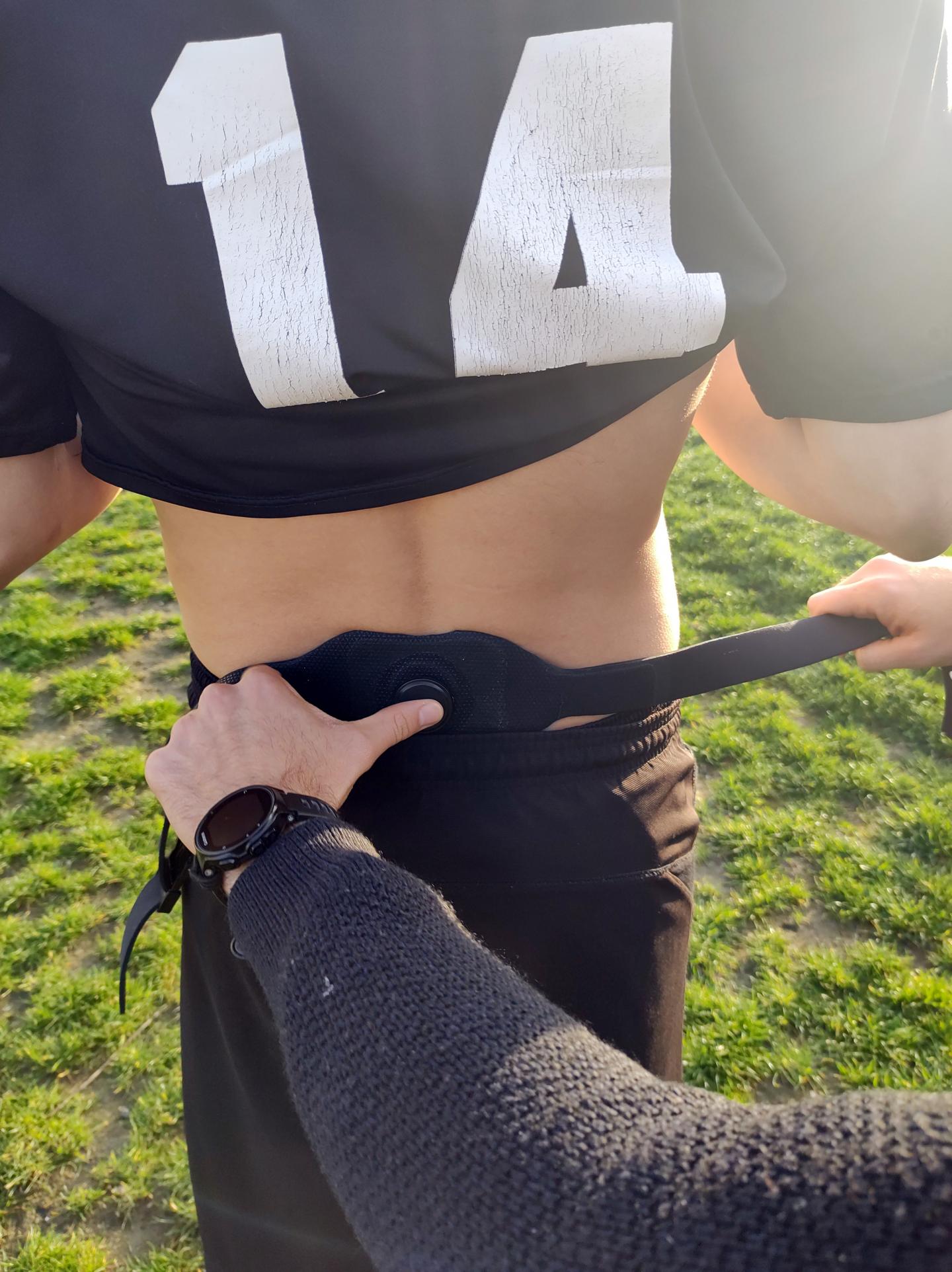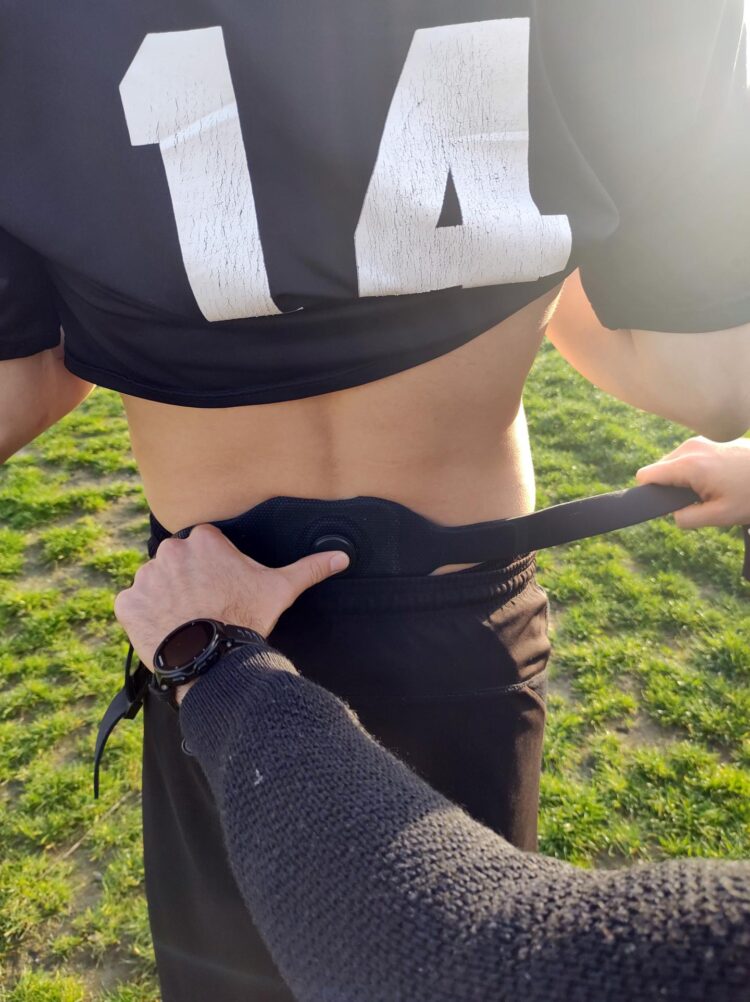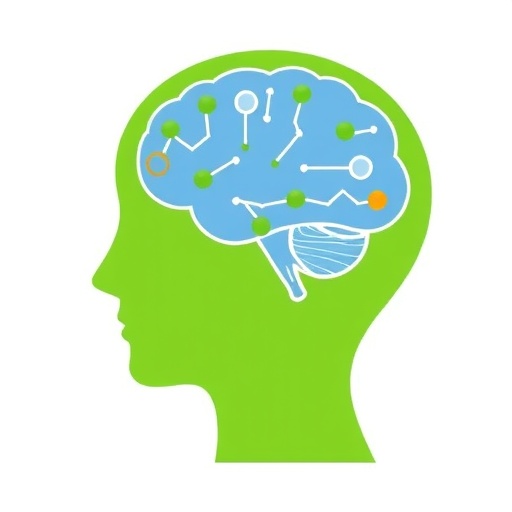New KU Leuven spin-off combines biomechanical expertise and AI

Credit: KU Leuven
Being able to exercise without pain or injury: it’s every athlete’s dream as well as the goal of RunEASI, a new spin-off of KU Leuven. RunEASI’s wearable measures the impact experienced by runners and provides scientific feedback that can help them avoid and recover from injuries. The spin-off is supported by the Gemma Frisius Fund and the Freshmen investment fund.
Runners typically use a heart rate monitor, but this device does not offer insight into how the body responds to the impact caused by the feet landing on the ground. And yet, this impact is precisely what determines the risk of injuries. RunEASI – which originated from a collaboration between movement and computer scientists at KU Leuven – has therefore developed a wearable application that does assess these important parameters.
This is achieved using a sensor that is attached to the lower back with a belt and is connected to an app. The sensors measures the impact on the body while running and detects any movement compensations that may occur. The app provides feedback to improve the running pattern. RunEASI is the first application that can perform such an analysis and intervention in a scientifically validated and efficient way. The application will be available on the market as of mid-February 2021.
Stability, symmetry, impact
“We are trying to establish the link between the way in which someone runs, the associated impact loads, and the risk of injuries,” says Professor Benedicte Vanwanseele from the Human Movement Biomechanics unit at KU Leuven. “Three parameters are key to this: stability, symmetry, and impact.”
“Research has shown that trunk instability increases with a runner’s fatigue level. When this is combined with high impact loads, this creates a compensatory pattern that increases the risk of overuse injuries. Symmetry shows whether the impact is equally divided between left and right: after an injury, for instance, a runner may favour one leg without realising it. Last, but not least, the impact parameter shows how the body responds to the shocks that occur when the foot strikes the ground.”
“Our tool intervenes when the data show that the runner has a harmful running pattern,” says computer science professor Jesse Davis. “AI allows us to analyse when the body is exposed to the most severe impacts. This can depend on the surface, the pace, the duration of the training, the runner’s fatigue, and other factors. On the basis of this analysis, coaches and physiotherapists can proactively adjust the runners’ training.”
More insight and better support
“With RunEASI we want to help runners, whether it be professional or recreational ones, to achieve their goals with less risk of injury,” explain co-founders Kurt Schütte (CEO) and Tim Op De Beéck (CTO). “The way our sensor is attached is unique and was developed in cooperation with the orthopaedic experts at Steunzoolpunt. It enables us to measure our new movement metrics very efficiently and accurately. Physiotherapists can use this scientific analysis to better assess when someone is ready to resume training after an injury.”
“We strongly believe in digital tools that improve a person’s quality of life, and this ambition is also reflected in RunEASI,” says Steven Spittaels of the Freshmen investment fund. “It’s an application that, thanks to its scientific feedback, can be of great added value to runners and professional healthcare providers. Athletes obviously want to know how to stay injury free and we want to support RunEASI to help them achieve this.”
“We are extremely grateful for the belief and financial support of the Gemma Frisius Fund and Freshmen Fund,” responds CEO Kurt Schütte. “With their support, we can fulfil our mission and ambition to make the world run better.”
###
More information
The RunEASI wearable can be pre-ordered and will be available as of mid-February 2021. Check the website for further information: runeasi.ai
Media Contact
Kurt Schütte
[email protected]
Original Source
https:/





